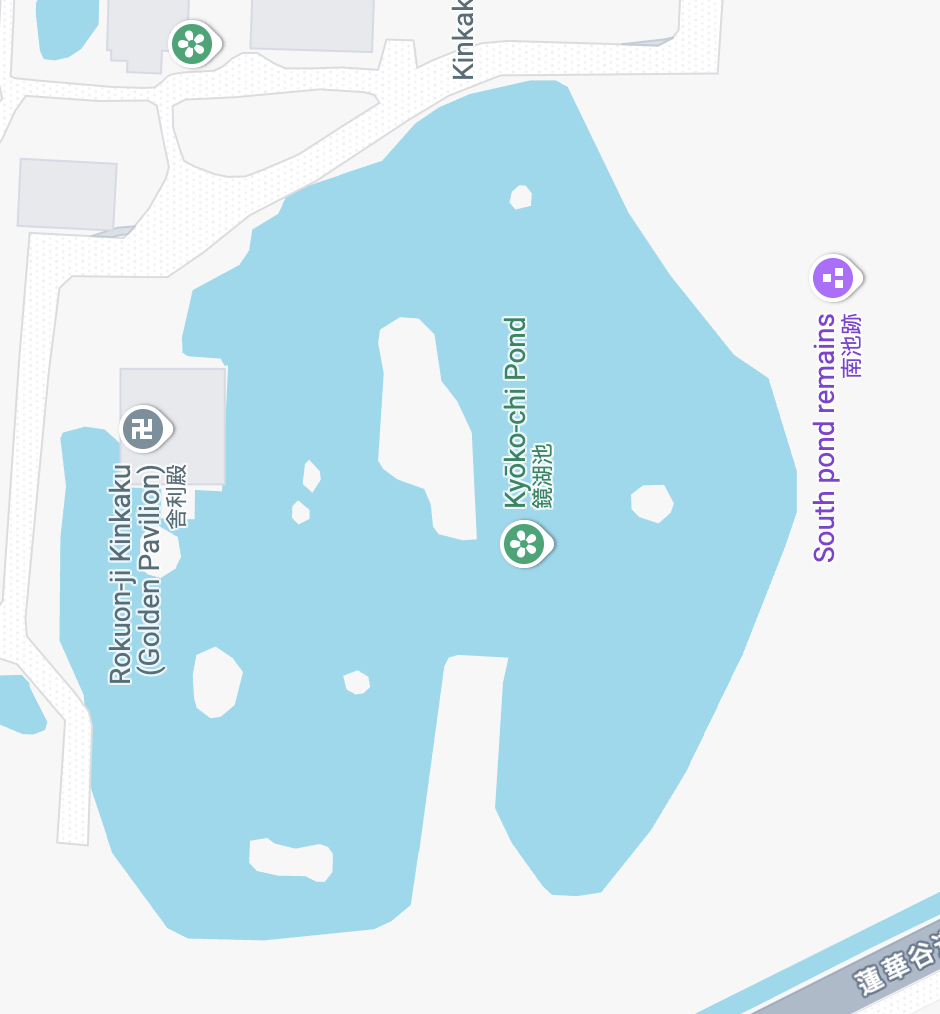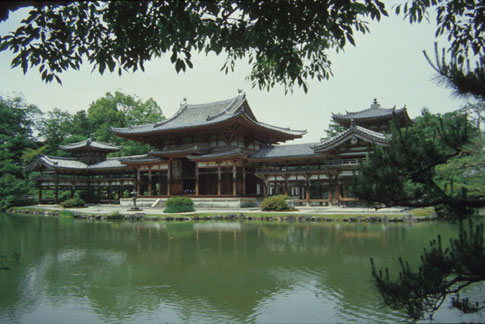
Kinkaku-ji, "Temple of the Golden Pavilion," is the popular name of Rokuon-ji, or "Temple of the Deer Park." The pavilion itself is the only remaining structure of a retirement villa constructed by the third Ashikaga Shogun--Ashikaga Yoshimitsu--in 1394 (the pavilion is actually a modern reconstruction, the original having been destroyed by an arsonist in 1950). It was converted to a Zen temple upon Yoshimitsu's death in 1409. The pond garden to the south of the pavilion probably dates back to the thirteenth century, when it would have been part of a typical shinden estate. Yoshimitsu may have added rocks and islands in an effort at evoking the Hindu-Buddhist cosmology, in which alternating seas and mountain ranges form the basic structure of the universe. Choose a view point from the map or click Tour the Garden for more views of this garden.
Kinkaku-ji, or the Temple of the Golden Pavilion, is located in the Kita Ward of northwest Kyoto. It occupies the site of the Kitayama-den (North Hill Villa), a shinden style villa constructed for the Saionji family in the thirteenth century. The land and the remains of the Kitayama mansion were acquired by Ashikaga Yoshimitsu, the third Ashikaga shogun, who began his construction of a retirement estate in 1394. Upon his death in 1409, and according to his will, the estate was converted to a Zen temple formally known as Rokuon-ji, the Temple of the Deer Park. That it has come to be better known as the Golden Pavilion reflects the fact that its most famous building--and the only structure that has "survived" from Yoshimitsu's residence--is the three-storied, gilded hall or shariden built along the northern shore of a large pond garden. This structure is actually a reproduction, the original building having been destroyed by an arsonist in 1950. Its reconstruction was based on plans and photographs that made possible a faithful facsimile, although the restoration included more gold than one would have seen on the original.
Yoshimitsu's estate became the center of Ashikaga culture in the last years of the fourteenth century, a period known as the Kitayama Epoch (the estate was located on the southern slope of Kyoto's northern hills: Kitayama). Under Yoshimitsu's patronage, the period saw important developments in such artistic pursuits as the No drama and linked poetry, both of which survived as important forms of expression in later periods. But in the history of garden architecture, the site represents the conclusion of a tradition: the large boating gardens that formed an important part of aristocratic estates in the Heian and Kamakura periods. In fact, the garden is only a Zen garden in the sense that it later became the site of a Zen temple.

